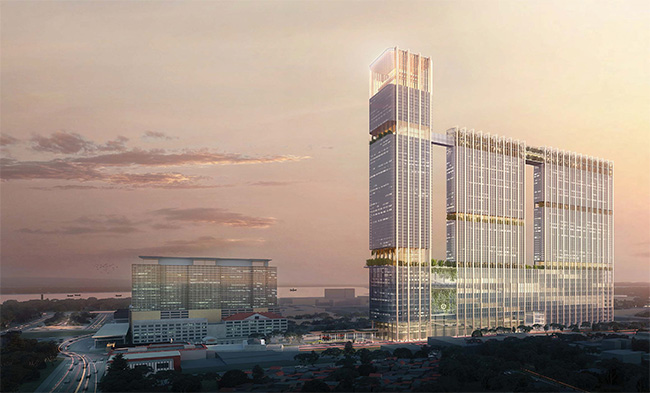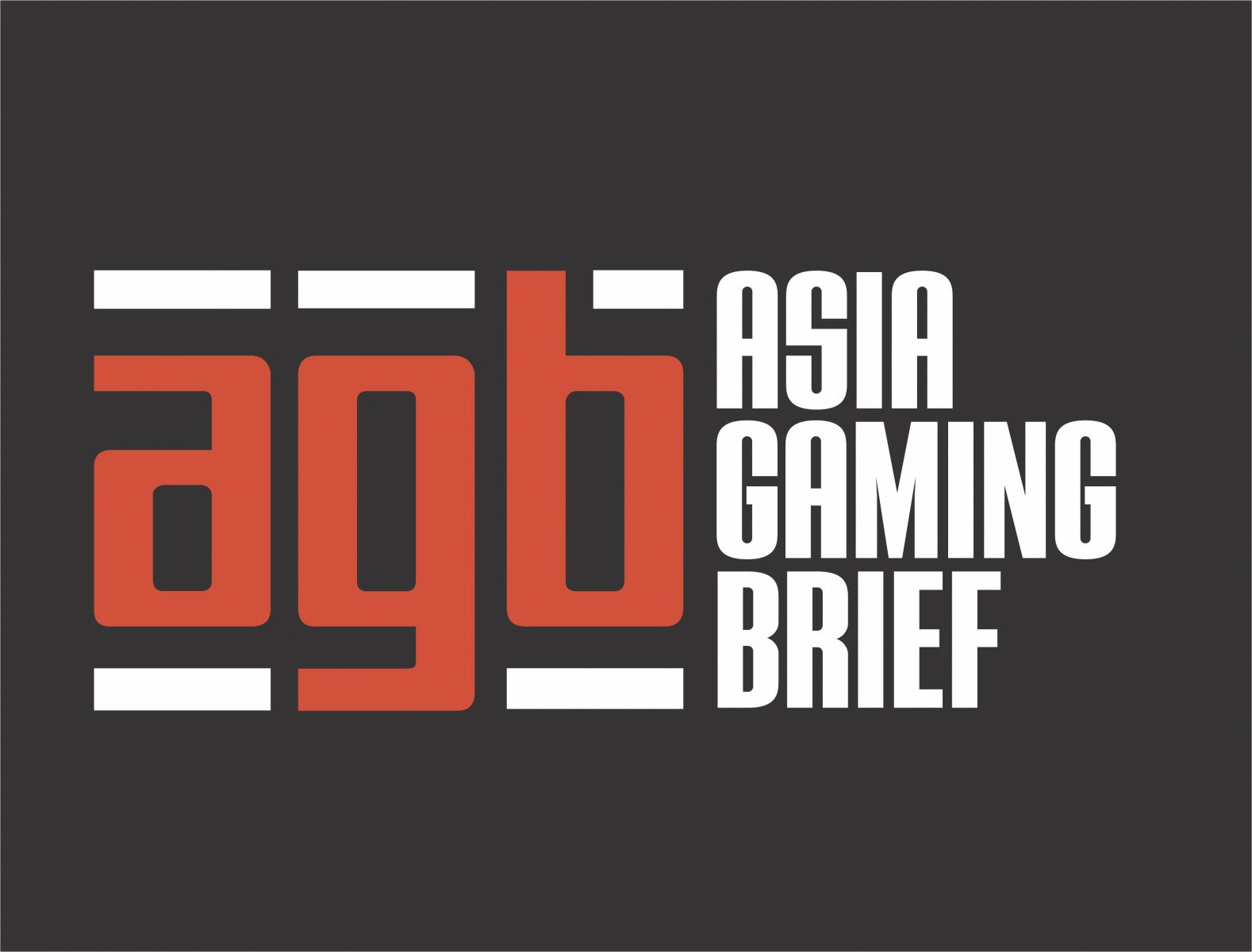Despite 2023 falling slightly short of expectations, the Chairman of NagaCorp says that the company is in a gradual recovery after COVID. Both VIP and mass have returned and as the number of flights increases, so should foot fall. In the meantime, Naga 3 is still scheduled for 2029, with financing to dictate the scope of the project.
We’re joined today by Timothy McNally, Chairman of NagaCorp, thank you for being with us.
Thank you, Kelsey, it’s my privilege to join you today.
You’ve had a very interesting year going through 2023. It was definitely a recovery from 2022, we saw that GGR was up 15.5 percent, net profit of 65.7 percent, EBITDA up 20 percent. Did that fall within the company’s expectations?
So let me just start off by saying, I’ve been involved with the company since 2005. So I’ve seen a lot of the history unfold, including the once in a lifetime event, or hopefully once in a lifetime event, or every 100 years: COVID.
So, yes, we’re still very much in a gradual recovery phase. Specifically, regarding the 2023 results. When we looked at the figures across the board, GGR, better than a a half a million; EBITDA, we probably fell a little short of expectations. We were looking for slightly over $300 million, we ended up at $295 million, a pretty good number. And that was up 20 some percent.
Even when we look at almost every business segment, whether it was mass market, the premium or the VIP: all up from last year. Foot traffic, our administrative costs and operating expenses decreased in 2023 at $134 million. So it was very much a positive in terms of business recovery.
But I emphasize that word gradual, and I go back to: we had a better year 2018/19. Certainly, knowing the Naga story. It’s been quite a story. And I think really the best days of Naga lie ahead. But we’re going to go through this recovery like everybody else, the severity of the disruption, shutting down business for the period of time, there is a startup phase, both in terms of getting your business operations back in place, but most importantly, getting people here to the property.
And that’s been what we’ve seen in terms of a graduated process over the last two years. And as you recall, it seems like longer than an it’s beenn, but it was only February last year China reopened, Hong Kong lifted a lot of their restrictions. So it’s only been all about the last 18 to 20 some months that people are really been picking up traveling again.
Speaking exactly of that, the Chinese contribution has always been strong, premium VIP and referral VIP continue to be strong contributors to the bottom line. Where are the majority of these high rollers coming from? We know that China hasn’t exactly liberated their travel so much, even within the past year, though they were expected to.
Where are the majority of these high rollers coming from, which are contributing to that premium mass and direct VIP?
Really, when we talk about their premium mass and the VIP. The premium is primarily coming from the local market here in Phnom Penh. If you look at our overall performance, it’s clearly mass market that’s leading the way. VIP referral: people are coming from Singapore, Thailand and Malaysia primarily, some Vietnamese. But at the end of the day, yes, there was a real serious decline from Macau, post-COVID, related to COVID-19, and obviously, regulatory and legal matters and changes dealing with junkets.
At the end of the day, on a macro picture, if you look where we are: very, very strong performance, we’re better than 80 some percent back – 84/85 percent back on the mass market. That’s due to the health of the local market.
We still have a lot of business visitors, the expatriate community has been growing, If you went back to 2006, at the time of the company’s listing, Phnom Penh was a city of 1.3 million today, it’s 2.3 million. Ten years out the projections are we’ll be at 3.3 million. With a monopoly license till 2045, we’re going to be the beneficiary of a growing and a sustainable mass market.
The VIP business, the premium, the premium mass is coming from this local market.
Really, if you look at the impact of tourism, it’s been minimal so far.
When I say that, in 2023, there was 5.5 million people, international arrivals. But the great bulk of those were cross border from Thailand and Vietnam. So really not impactful on the bottom line, particularly when you compare it to 2019, or 18, where we had 6.6 million tourists, but 2.4 million of those were coming from China. And you know, that is yet to come. And the reason is obviously ramping up in terms of airlines.
I think when you look at 2021, it was only 54 flights weekly coming in from China. Now we’ve gone up considerably, I think the exact number of flights coming in now are, as of February is 507 flights weekly, and 108 from China.
So this has been a very gradual process, like I meant, you went from 894 flights a week, going back to 2019. By the end of 2020, we were 36 flights weekly coming into Cambodia because of COVID, followed by 52.
So that’s what I’m trying to express in terms of the magnitude of an impact and disruption, not just felt by Naga but everyplace else.
Tourism is something that I would say is just going to add to what I would say is a very healthy recovery.
The impact of tourism will grow that mass market contribution, but also again, on the premium play it’ll also make a good contribution.
VIP, we’ve seen growth in that area. But as I mentioned, that’s primarily coming from traditional groups we’ve had out of Malaysia, new groups from Singapore, and additional groups from Thailand and Vietnam.
But going forward, if I had to look at the long term health of NagaCorp it’s going to come from that continued growth of the mass market. And obviously the margins are significantly better.
I think our overall financial health is there.
I know a question that always lingers is, another key financial noteworthy commentary would be our cash reserves went from $175 million at the end of 2022, all the way up to $367 million by the end of 2023. The question is, we have a bond payment due in July $472 million. Just recently, when our results were announced in Hong Kong, the CEO Fon Chen very clearly and concisely indicated we’re going to pay off that debt when it’s due, no refinancing involved.
In terms of financial health of the company, that also will be a very positive thing that we have off our checklist of things to do. And that will allow us to move forward. We’ll have a little bit of tightness after we make that payment. But if we continue to generate the type of revenue, and plus what our expectations and projections we’ll be on solid ground.
I want to tie that into Naga 3, because during the press conference as well, when they were talking about the results, recently, there was the tie-in between the investment within Naga 3, and the ability to pay off the bond. So I know that in the investment in Naga 3 you’re trying to cut down Capex as much as you can to be able to make sure that there’s stability within the company going forward and not overextend yourselves. Previously, that had been talked about as being something like a $3.5 billion project. Has that changed?

You can always go back to the original announcements, which were in 2019. And obviously, those numbers and that environment and conditions on the ground all dictated the plant at that time. Now essentially, the financial arrangement is still there. The original pledge or commitment was $3.5 billion, half was going to be put up by the company, half with the founder, Dr. Chen, and now his trust: 50/50 financing. That remains intact.
However, in 2021 or early 2022 we announced that we were going to move that date out from 2027 or 2026 all the way out to 2029. That was a result of that major disruption I keep referring to called Covid.
So, Fon Chen explained it well in some of the briefing we had with analysts that we’re going to do a very significant evaluation, that’s already begun, in terms of resizing, reloading the design and data.
It wouldn’t make much sense. If we added the 3,500 additional hotel rooms to the 1,700. That put us well over 5,000 hotel rooms. And we’re certainly – like anybody else – we want to see those rooms occupied. So the resizing, the reevaluation will cause some adjustments and amendments.
As you’re probably aware, now, you know, we’ve spent about $650/700 million capitalization so far, dealing with the piling foundation work, the basement work. That’s all going to be completed by the first quarter of 2024, right now, another month or so. Then we’re going to go ahead and proceed with the podium, or the entertainment complex. Most of that: 90-some percent, as we originally announced will be non-gaming.
You know, we want to make Naga 3, clearly, a tourism asset for the country.
As a part of that, the non-gaming aspect, you want to make sure that you’re the beacon on the horizon. And that’s something that you were trying to literally do within the hotel tower. So, one of the hotel towers was expected to be around 70 stories-tall, being the tallest building, I think in Cambodia if I’m not incorrect, has there been any modification to the plans for the physical size of the development of Naga three?
That’ll be forthcoming. I don’t have anything specific to share at this point, as part of this review and evaluation that’s going on – you want to call out the downsizing or adjustment. We’re gonna maintain the flexibility and make sure that it’s a fluid process that, if we don’t put up three towers right away, we want to be in a position to add towers as again the market dictates to do so. The first phase will be the entertainment tower, and then the hotel portions or towers.
You mentioned the beacon. Dr. Chen’s vision was obviously to create the tallest structure in Pnhom Penh, where everybody could see from the sky and elsewhere, the lights of Naga – much like that same effect when people fly in from Los Angeles to New York and to Las Vegas. That’s still part of the dream, part of the vision.
The timetable the timeline when that China visitation and tourism, that’s part of the equation of what we’re we’re looking at. It’s not a question of if they’ll come back, it’s really more a question of when they’ll come back.
Non-gaming has to be a huge aspect of Naga 3, however, we can’t avoid the gaming aspect. I know that there have been designs that were drawn up for the gaming floor itself. Do you think that those are going to be changing? Or what can you give us in terms of the idea of what intentions there are for the casino space itself? Are there still going to be VIP junket areas, how many EGMs are you looking at? How many table games you’re thinking about?
You know, at the time Naga 2 was put together, I think we were at 5,000 machines, and we added 600 gaming tables. And there was a plan to add a specific number. It certainly was an estimate, even when we announced it in 2019, adding another 1,200 gaming machines and adding another 500 tables. When you look out, and we’re talking about 2029, and also the fact that we’re looking at an evolving situation in terms of the market, they would be just really estimates at this point.
Remember, this monopoly license here goes to 2045, within 200 kilometers of Phnom Penh, probably the longest license in the world, and probably to that extent growing with a country as well as growing with an urban area. And we don’t have limitations on the number of facilities that we could build. If you recall, Dr. Chen exercised restraint, initially one then two. He didn’t want to overwhelm the country with gaming because obviously it was a country on its way up with all kinds of challenges.
That philosophy, and also conservative fiscal policies drove a lot of those decisions. That won’t change within Naga. So, Naga 3 will have gaming, but it’ll really correspond with that amount of visitation combined with the pace of the growth of Phnom Penh.
And I think both the new government, as well as ourselves and the industry as a whole, recognize that for us to be competitive we need to keep those competitive advantages that we have. And we are obviously in a better position than most because of that license that gives us a monopoly of 2045. And our license runs all the way out through 2065.
Not only the monopoly on the license, but also the percentage on the taxation rate that you have to pay. Do you anticipate that there might be any changes over that within the course of the extent of the monopoly that you have?
It was 2020 when the new Commercial Gaming Law went into effect, the taxation rates for mass market: we went from the fixed annual to, obviously, a percentage basis: 4 percent and 7 percent for the VIP and the mass.
But like any government, there’ll be tax initiatives as the country prospers more, as greater industry comes in. And certainly, I think we always recognized on the front end that the country’s success was tied to our success. So, we’re very happy with the tax situation now. In our eyes, it keeps us competitive, we’ll certainly urge the government to keep us a priority in any assessment, the ability to compete within the region, and keep Cambodia at the forefront. So, but I’m also not naive to say that: there will always be initiatives within government to raise revenue and different types of taxes.
There’s going to be a lot of changes happening, there’s gonna be growth within the Philippines, Vietnam, all of everything regionally. So it is going to be tough competition. There’s a lot of people vying for Thailand, but I’m sure that Naga is going to be able to find their way through especially giving their experience within the Asian market. I just wanted to say thank you again for your time. Timothy McNally, Chairman of NagaCorp. Thank you for being with us.
Kelsey, it was my pleasure. Wonderful speaking with you. Thank you.






















